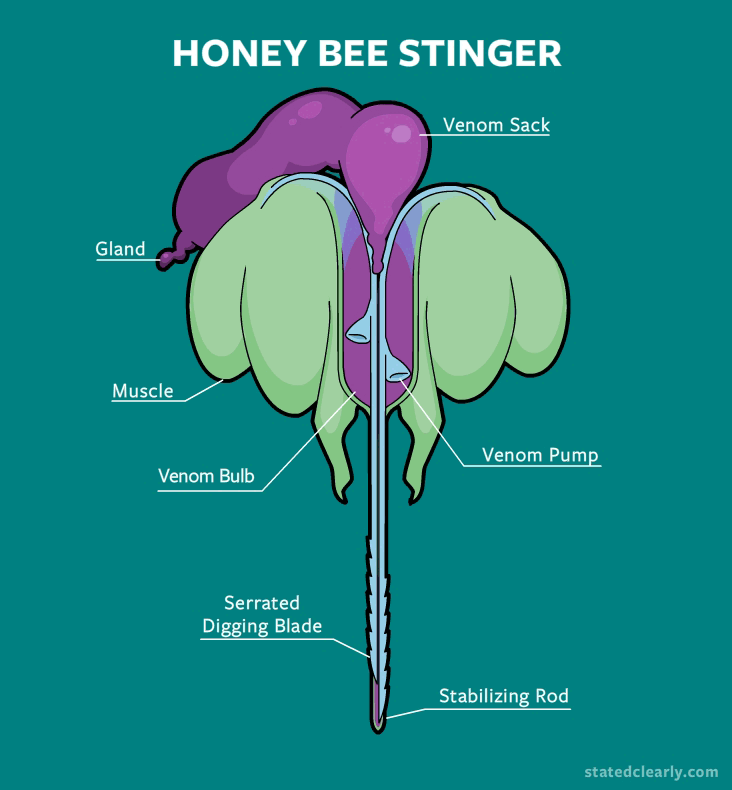Welcome to the FRB blog, where every month we explore the world of honeybees! Today we are going to discuss honeybee stings; how uncommon they truly are and the physical makeup of the sting itself.
In the spirit of October, lovingly referred to by many as Spooktober, we are going to talk about something that scares a lot of people; bee stings. Despite the fact that bee stings are exceedingly rare, it is often the first thing people think about when discussing honeybees.
Honeybees are actually very docile creatures. They resort to stinging only as a last resort to defend themselves or the hive. What most people think are bee stings are actually stings from other insects like wasps, hornets, or yellowjackets. These insects are far more aggressive, and are known to sting on a whim.

Most stings that people associate with bees are caused by hornets or wasps (especially Yellow Jackets). The species of honeybee that we will raise here at FRB (Apis mellifera ligustica) originated in Italy and is the most docile of any bee species. Your chances of being stung are 6,000,000 to 1, as calculated by the Harvard School of Public Health.
Despite 2.5 million Americans being allergic to bee stings, only ~20 fatal stings occur each year. This is 60% fewer critical injuries than lightning, which leads to ~50 fatalities annually according to NOAA, and 50% fewer critical injuries than shark attacks, which lead to ~40 fatalities annually according to Florida Museum and ISAF. So, as you can see, while there is some risk of being stung by a honeybee, it is really rare.

Many people are aware that when a honeybee stings a person the stinger is ripped free from the bee’s abdomen, resulting in its imminent demise. The reason for this comes down to the physiology of the stinger.

The stinger consists of a venom gland, sack, and bulb; several muscles; two pumps inside
the venom bulb; and three prongs (two serrated digging blades and a stabilizing rod for the blades to run on). The blades combine with the rod to form a hollow tube for venom delivery.
When the hive is attacked by other insects, bees can sting their foes multiple times, injecting venom and then removing the stinger safely after each stab. When attacked by larger animals—like birds or people—bees insert the stinger deep into the flesh, then fly away. The stinger tears off the bee’s body along with the venom gland, pumps, and muscles. The process kills the bee but allows the stinger to continue digging and squirting venom into the attacker ensuring that every drop is used.
Because stinging means certain death, honey bees won’t sting unless they absolutely have to. They really only resort to stinging when they perceive a threat to the hive. As a result, most foraging honey bees won’t even attempt to sting you in the midst of a pollen harvest. As long as you stay away from hives, you should not have to worry about honey bee stings.
To learn more about honeybees and how low your chances of being stung by one are check out the Free Range Beehives home page or reach out to us using the links at the bottom of the page.


